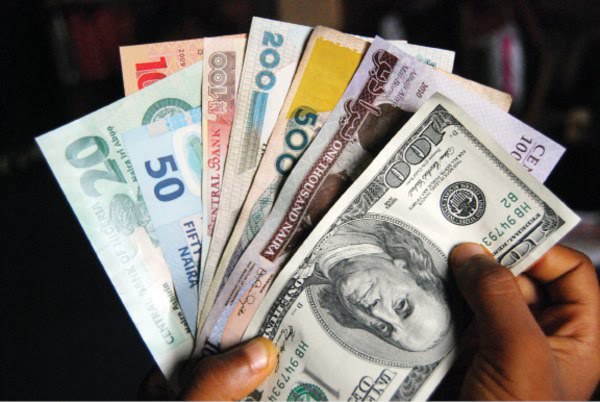By
Chike OlisahForex turnover rose significantly by 194.2% as Nigeria’s exchange
rate at the NAFEX window depreciated against the dollar to close at
N386/$1 during intra-day trading on Friday, October 30.
Also, the naira appreciated against the dollar, closing at N462/$1 at
the parallel market on Friday, October 30, 2020, as businesses open up
after relaxation of the curfew initially imposed to curtail the
widespread violence that followed the hijacked #EndSARS protests and
also the public holiday to mark Muslim festival
This is also as businesses shut down due to the outbreak of violence
in Lagos and some parts of the country during the protests against the
special anti-robbery unit (SARS) and police brutality by the Nigerian
youths.
Parallel market: According to information from
Abokifx – a prominent FX tracking website, at the black market where
forex is traded unofficially, the Naira appreciated against the dollar
to close at N462/$1 on Friday. This represents a N3 gain when compared
to the N465/$1 that it exchanged for on Wednesday, October 28.
- The local currency had strengthened by about 7.8% within the one
week in September at the black market, as the CBN introduced some
measures targeted at exporters and importers, in order to try to boost
the supply of dollars in the foreign exchange market, and reduce the
high demand for forex by traders.
- The CBN has sold over $500 million to BDCs since they resumed forex
sales on Monday, September 7, 2020. This was expected to inject more
liquidity to the retail end of the foreign exchange market and
discourage hoarding and speculation.
- However, the exchange rate against the dollar has remained volatile
after the initial gains made, following the CBN’s resumption of sales of
dollars to the BDCs.
- The President of the Association of Bureau De Change Operators,
Aminu Gwadebe, said he expects the impact of the extra liquidity in the
market to be gradual.
- Despite the drop in speculative buying of foreign exchange, the huge
demand backlog by manufacturers and foreign investors still puts
pressure and creates a volatile situation in the foreign exchange
market.
NAFEX: The Naira depreciated against the dollar at the Investors and Exporters (I&E) window on Friday, closing at N386/$1.
- This represents a 33 kobo drop when compared to the N385.67/$1 that it exchanged for on Wednesday, October 28.
- The opening indicative rate was N386.63 to a dollar on Friday. This
represents a 74 kobo drop when compared to the N385.89 that was recorded
on Wednesday.
- The N393.44 to a dollar is the highest rate during intraday trading
before it closed at N386 to a dollar. It also sold for as low as N383/$1
during intraday trading.
Forex turnover: Forex turnover at the Investor and Exporters (I&E) window rose sharply by 194.2% on Friday, October 30, 2020.
- According to the data tracked by Nairametrics from FMDQ, forex
turnover rose significantly from $73.01 million on Wednesday, October
28, 2020, to $214.78 million on Friday, October 30, 2020.
- The CBN is still struggling to clear the backlog of foreign exchange
demand, especially by foreign investors wishing to repatriate their
funds.
- The huge increase in dollar supply after the previous trading day’s
drop reinforces the volatility of the foreign exchange market. The
supply of dollars has been on a decline for months due to low oil prices
and the absence of foreign capital inflow into the country.
- As part of the measure to check forex abuse and check illegal
transactions, the CBN last month directed the freezing of accounts of
about 38 companies.
- The average daily forex sale for last week was about $169.93
million, which represents a huge increase from the $34.5 million that
was recorded the previous week.
- Total forex trading at the NAFEX window in the month of September
was about $1.98 billion, compared to $843.97 million in August.
- The exchange rate is still being affected by low oil prices, dollar
scarcity, a backlog of forex demand, and a shaky economy that has been
hit by the coronavirus pandemic.


No comments:
Post a Comment